Text
Evaluating B2B Market Penetration
Key Metrics for Business Expansion Drive business expansion with a strategic approach and deep understanding of your market. Stay ahead of the game with these essential insights.

Introduction
To successfully expand your business in the B2B market, it’s important to have a strategic approach and a deep understanding of your market penetration. By tracking key metrics, you can evaluate the effectiveness of your expansion efforts and drive success.
This blog post will discuss the essential metrics for evaluating your B2B market penetration and achieving successful business expansion.

Customer Acquisition Rate
The customer acquisition rate is a key metric for measuring market penetration. It shows how many new customers your business is gaining within a specific time frame. This metric helps you evaluate the effectiveness of your marketing and sales efforts in attracting and converting new B2B customers.
Customer Retention Rate
In addition to acquiring new customers, retaining existing ones is also important for sustainable growth. The customer retention rate measures the percentage of customers that continue to do business with you over time. A high retention rate indicates customer satisfaction, loyalty, and a strong market presence. By tracking this metric, you can assess the appeal of your B2B offerings and identify areas for improvement.
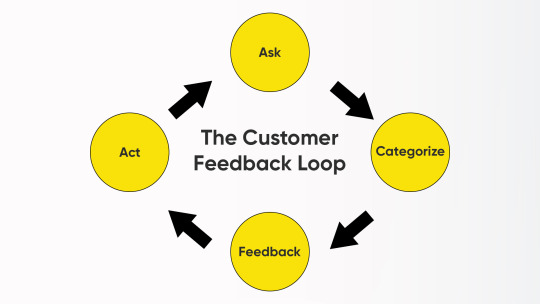
Market Share
Knowing your market share can provide valuable insights into your position in the industry and the level of competition. It’s typically calculated by dividing your company’s sales by the total market sales. By monitoring changes in your market share over time, you can evaluate your penetration efforts relative to competitors and identify growth opportunities.
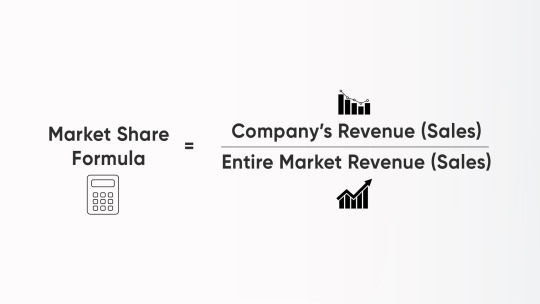
Customer Lifetime Value (CLTV)
Another important metric is Customer Lifetime Value (CLTV), which measures the total revenue a customer is expected to generate throughout their relationship with your business. By evaluating CLTV, you can focus on high-value customers, tailor your marketing strategies, and allocate resources effectively. A higher CLTV indicates strong market penetration and customer loyalty, which are essential for sustainable growth.

Average Revenue per Customer
The average revenue per customer metric provides insights into the revenue generated from each B2B customer on average. By monitoring this metric, you can identify opportunities to increase your average deal size, upsell or cross-sell, and optimize pricing strategies. An increase in average revenue per customer indicates deeper market penetration and improved monetization of your B2B products or services.

Sales Funnel Conversion Rates
It’s also important to analyse the conversion rates at each stage of your sales funnel to evaluate your B2B market penetration. By tracking conversion rates from lead to prospect, prospect to customer, and beyond, you can identify bottlenecks in your sales process. Improving conversion rates at different stages of the funnel can significantly impact your market penetration and drive business expansion.
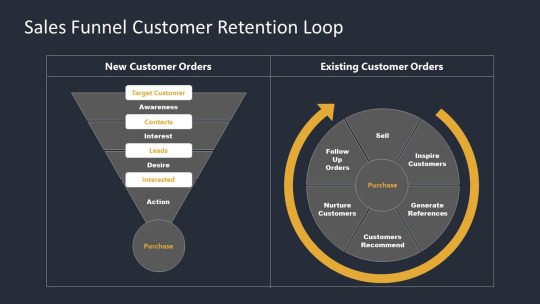
Customer Satisfaction and Net Promoter Score (NPS)
Satisfied customers are more likely to become loyal advocates for your brand and contribute to positive word-of-mouth marketing. By tracking customer satisfaction metrics and Net Promoter Score, you can gauge the loyalty and advocacy of your B2B customers. Consistently monitoring these metrics enables you to identify areas for improvement, enhance customer experience, and strengthen your market presence.
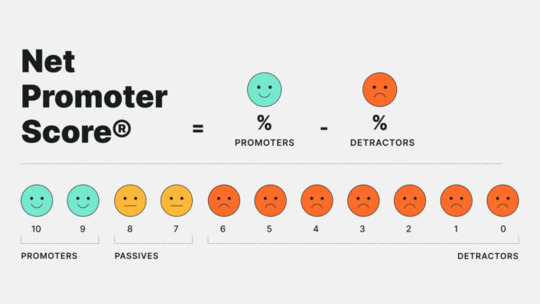
Conclusion
By monitoring key metrics such as customer acquisition and retention rates, market share, customer lifetime value, average revenue per customer, sales funnel conversion rates, and customer satisfaction, you gain valuable insights into your market position and the effectiveness of your expansion efforts. Regular analysis of these metrics will help you make data-driven decisions, optimize your strategies, and drive your business forward in the competitive B2B landscape.
0 notes
Text
Impact of Customer Feedback on Business

Acing at your business and yet awaiting exponential growth?
YES? then a possibility is; ‘Customer Feedback Analysis’ which is a very important aspect of company growth remains underrated and untapped.
Let us see how …
Why is Customer feedback important?
FACT: Do you know that 90% of customers are influenced by positive reviews when buying something?
WISDOM:
“Don’t waste customers’ time asking questions, unless you are prepared to act upon what they say.”
– Bruce Temkin
Having a thorough grasp of your clients’ preferences is crucial in the modern business environment to ensure that customer’s perception of your brand is in sync with your own.
This blog aims to help you understand how any business may set the ball rolling to reach new heights of success by examining the feedback that has been gathered.

Feedback collection
FACT: 75% of Zappos’ orders come from repeat consumers.
WISDOM:
“The customer’s experience is the next competitive battleground.”
– Jerry Gregoire
Irrespective of the company-size; customer satisfaction and company growth are two key aspects every business aspires to attain.
Brands like Apple, Amazon, Zappos, etc have been very vocal about the relevance of not only collecting customer feedback but also the need to analyze it and act appropriately.
A customer’s satisfaction/dissatisfaction with a product or service can have a major impact on company growth. It is important for businesses to understand their customers’ preferences as well as their current and future needs.
This can be done by developing questionnaires, reviews, surveys, emails, and using customer interactions via calls and one-on-one mode and gather feedback. For example, feedback can include the following:
From where they learnt about the brand
Reason to choose the brand
USP of the brand as per them
Their rating for the products/services on a scale of 1 to 5
Their expectations from the brand moving ahead
Any difficulty they might have faced while dealing with the brand
Their purchase and post-purchase experiences
To ensure the feedback is honest and includes critical analysis, it is crucial that the customer’s anonymity is assured and maintained. Customers need to feel heard and understood. So, it is imperative to use clear, concise language when interacting with them.
One effective technique is to ask open-ended questions. This encourages customers to expand on their thoughts and feelings, allowing the company to get more clarity on their needs and expectations.
Another helpful technique is active listening, which involves focusing on their words and non-verbal feedback whenever possible.
Listening is an essential skill in customer service. Customers appreciate it when they feel their concerns are being heard, understood, accepted and most importantly acted-upon appropriately.
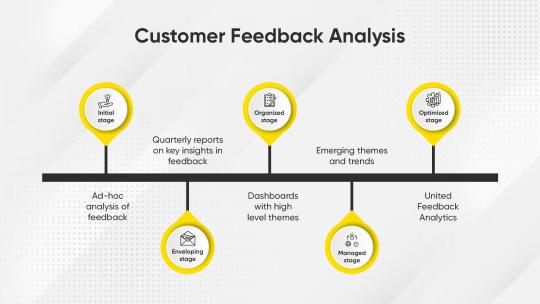
How to analyse smartly?
FACT: According to Microsoft, 52% of people around the globe believe that companies need to take action on the feedback provided by customers.
WISDOM:
“Your most unhappy customers are your greatest source of learning.”
– Bill Gates
Follow 3 easy steps to analyse:
Collect feedback data in one place
Classify it
Act on it
Once collected, it can be categorized and sub-categorized under the following headings:
Positive
Negative
Neutral
Junk
Generic
Critical
Specific
Actionable
Non-actionable
Classification makes the process of analysis smooth and swift. Identification of the root cause and designing an action plan is then, a cakewalk.
Positive ones motivate, negative ones teach, and neutral and junk can be canned. Constructive feedback is usually actionable. Even if it is generic, it gives-away a few tips for improvement. Non-actionable feedback is usually vague, lacks clarity, and may also be a venting activity.
Specific feedback helps understand the following three vital things:
Which product/service is a favorite amongst customers
What is making a particular product or service sell like a hot cake
Which factors are preventing other products/services from bagging more sales
Critical feedback, on the other hand, supports the analysis of products or services that are not yet meeting customers’ expectations. With such feedback, improvisation in specific product/service becomes straightforward.
Also, evaluating the authenticity of any feedback is of high significance so that the time and resources of the brand/company are used in the right direction.

Benefits of Analysing
FACT: As per Zendesk Survey, 52% of consumers make an additional purchase after a positive customer service experience.
WISDOM:
“Use feedback analysis to identify your strengths. Then go work on improving your strengths. Identify and eliminate bad habits that hinder the full development of your strengths. Figure out what you should do and do it. Finally decide what you should not do.”
– Peter Drucker
Advantages of customer feedback analysis are many. Let us look at these eight major insights that are obtained out of customer feedback analysis.
1. Enhanced product/service understanding
Hot selling product/services
What product/service vibes well with the market
Areas that need improvisation
In-depth understanding of customer’s expectations
2. Customer understanding
Customers’ pain points
Customers’ happiness quotient
Evaluating the buyer’s mindset
A retained customer gives priceless insights on what the company/brand has been doing correctly
3. Company/brand’s USP
Viewing the company from a customer’s eyes
Prevailing market sentiment about the company/brand
Effective sketching of marketing strategy
Areas that connect well with the customers
4. Find friction points in the customer’s journey
Your product/service may have issues that confuse the customer or makes them feel stuck. These friction points can be frustrating and disengaging. No matter what stage of the funnel your customer is in, you can take action to reduce friction and boost user engagement.
5. Enhance customer experience
Feedback analysis can reveal unrest faced at different touchpoints in the customer journey. Fixing those issues can lead to an enriched customer experience.
6. Increase customer loyalty
The customer who is happy will remain loyal. When a company starts using ‘customer first’ approach at its core the customers can sense it. Satisfied customers often become self-appointed referral partners and word-of-mouth would spread like wildfire.
7. Boost profits
Marketing techniques can be modified and finely tuned as per the needs and customer experience. Unexpected trends can be uncovered and used to strategize better
8. Innovation and survival
Customer-centric approach is a long-run approach. New ideas and innovations can be well-framed based on analysis. It also creates space to survive trial and error without much damage, if the customer service is taken care of.
As expressed by Jeff Bezos and Steve Jobs; “Obsessing over customers is more important than obsessing over competition”. Additionally, understanding your customers on a deeper level allows you to create a more personalised experience, which in-turn leads to stronger customer relations and increased turnover.

In Conclusion
Understanding the customer is vital for any business. Building relationships with customers is essential to maintain success, as it enables you to understand their needs and provide the best possible products / services.
Having a clear understanding of customers’ preferences and habits allows you to develop tailored marketing practices and target different market segments effectively. It also helps you to create better products and services that are customised to their needs.
Click here to know how Stratefix can help your business achieve its desired growth.
0 notes
Text
Employee Retention: All you need to know about it!

Yet another resignation?
Oh NO, not again!
“Employees don’t leave companies, they leave people!”
– Dale Carnegie
Let that sink in …
A company is not always judged based on its balance sheet; providing job satisfaction to its employees is also a major factor that impacts a company’s reputation!
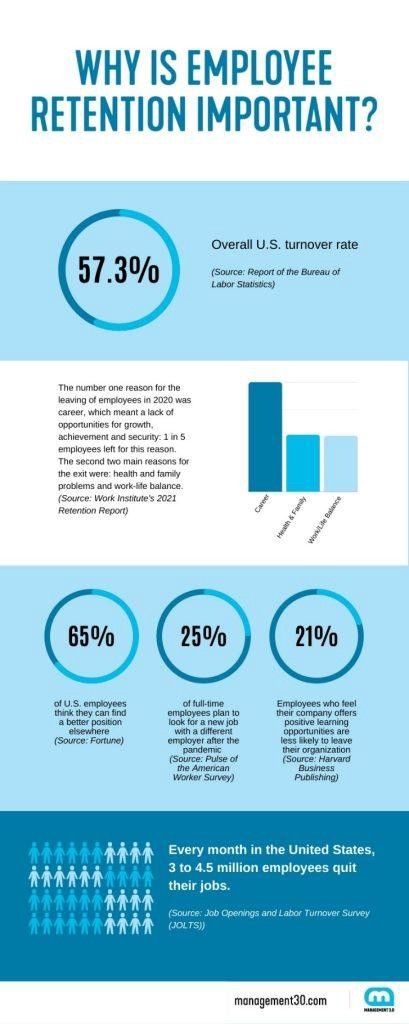
Retention Relevance:
“To win the marketplace, you must first win the workplace.”
– Doug Content
Your employee is not through your business but it is the other way around!
Employee retention is the ability of a company to sustain their talent by preventing employee turnover. While this sounds so simple, how has this become such a matter of grave concern?
Attrition will not only spoil the company image and morale but also make a remarkable dent on the Balance Sheet :
Costing Flies towards the Sky
Customer Dis-satisfaction and in turn Retention
Divert the Director’s Focus
Productivity sucks
New Talent Acquisition and Overall Culture
Well said by Peter Sticker,
Culture eats Strategy for Breakfast

Psychology of Employees and Their hidden Needs:
“Employees who feel a sense of belonging tend to stay engaged, productive and are far less likely to leave, so to keep the good employees; invest in belongingness.”
– Adam Mambo
When people take a job, they look for a mix of goals!
Financial benefit is a major magnet to keep an employee but it is a myth to believe that only a good pay scale can retain an employee. People come from different walks of life and have varied criteria not only while taking up a job but also while retaining it.
Examples of other things that any sensible employee looks for can be:
Company culture
Personal and professional growth
Feeling of belongingness
Being heard
Being cared for
Appreciation
Inclusiveness
Being understood
Being trusted
Being valued
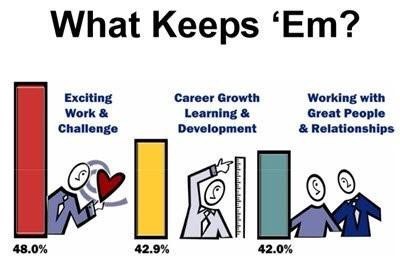
“People work for money but go an extra mile for recognition, praise, and rewards.”
– Anonymous
What goes in the core of building the company will return back like a boomerang.
The leadership of the company has a vital role to play here.
It is an open secret that every team will be filled with members having IQ and EQ at different levels. All members of a team are not going to be on the same page at all times. Nonetheless, the onus lies on the shoulders of the leadership to ensure unity.
Despite the efforts to draw a unified and streamlined approach companies fail to achieve it.
Non Financial Parameters affecting the Culture :
Internal politics,
Groupism,
Favoritism,
Bad-mouthing,
Verbal disrespect
Failure in recognizing performance,
Unnoticed efforts,
Lack of appreciation,
Injustice,
Poor personal support,
Skewed work-life balance,
Faltered pay hike and omitted promotion
The more unhappy an employee is, the more the probability of them resigning. The higher the rate of unfairness meted out to good employees easy will be the string of resignations that follow. When other employees can see how the leadership or company is careless in handling good people, even they lose interest in sticking in.

“Start the retention process when the person is still open to staying, not after they have told you they are leaving.”
– Jeff Weiner
The direst of puzzles become easy after a tipping point and so does the puzzle of talent retention!
If you hire genius minds and keep guiding them how to think all the time, it is a lose-lose situation to be in. Hiring great talent is a different story and letting them run-through with their tasks independently is what truly brings the benefits to the table.
Remember, Culture moves from Top to Bottom.
It is up to the top management (leadership) of the company to ensure all the people are given due respect, protection, opportunity, a lending ear, appreciation, growth, prejudice free and unbiased environment and most importantly justice. This will in turn encourage employees to treat each other with grace and the customer in a more hospitable manner.
Train them, trust them, applaud them for them to feel valued and thus willing to stay. When the best people win and are acknowledged they stay with the company. Treat them right. Even one dissatisfied and wronged employee can cause a downfall.
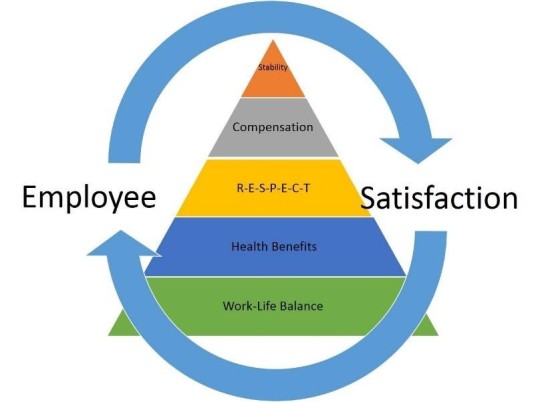
“If you take care of your employees, they will take care of your customers and your business will take care of itself.”
– J W Marriott
Value your employees as individuals and not just a human-resource!
Treat them like ‘humans’ and they will automatically become a ‘resource’. Employee has to be treated like an asset for them to function that way. If they are given the feeling of a liability and burden on the company, they are likely to become one. Employee are those assets who constantly appreciate in value when treated right.
The recipe to retention can come from, treating them with inclusiveness, encouraging expectations, helping them grow, competitive remuneration, and nurturing their skills.
Tools to Enhance the Retention of Employees:
Annual review cycles
Monthly feedback systems,
SOP in their problem solving at professional as well as personal level
Retention-pie
Employee Happiness Index

Happy retaining! Happy working! Happy growth!
0 notes
Text
Delivery Delay despite OVER time
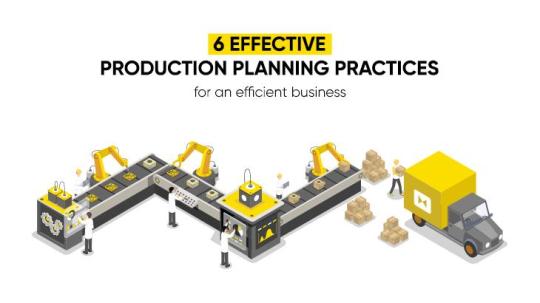
Customer: 90% of the time we face delays in delivery, why?
Production Manager: Next time onwards, it will not happen for sure.
Director of Production Unit (Silently Thinking) : I am also finding out the answer of this “Why”.
Typical Manufacturing Units faces Delivery delay in most of the cases and the best solution that they find across their experience is “Short Term Solution” – Overtime.
Initially, Overtime thrills but it kills the organization in longer run. Employees are unhappy due to giving overtime all the time and customers are unhappy because of delayed delivery. In turn, Companies’ keep their credibility at stake.
Not Only credibility but due to delivery delays, the Organization also faces many challenges :
Opportunity Loss, New Business
Customer Loss, Repeat Business
New Business Loss, Reference from Existing Customer
Profitability Loss, due to Delay
Weak Employee Retention, due to Overtime
High Wastage as an impact of Urgency
High Cost due to Wastages and Overtime
“The bottleneck is never code or creativity, its lack of clarity”
– Scott Berkun
The ultimate key is to identify the “Culprit of Delivery Delays”. Irrespective of everyone in the value chain meeting the deadline, deliverables are not reaching on time. It means there are some blocks in the process that we need to identify to smooth line the process.
A Best possible route to find the culprit is to start with “Production Planning and Control” which enable companies to track the Production from scratch and map the root cause of delay. It is the tool to coordinate and integrate manufacturing activities. It’s objective is to plan and control all the factors affecting the Production, may be movement of material, labour, machine utilization, any other related activities, outsourcing vendor or any other factor affecting production to meet the deadline.
1. A Whole in the Pipeline :
Problem: Before the product reaches the customer it passes through a lot of processes which include multiple machinery processes as well as human resources.
Let’s understand taking one simple example : In one of the Production line, the product passing through 3 processes,
Machine A + Machine B + Machine C = Final Output
If Machine ‘A’ is producing 20 units/hour and Machine ‘B’ is giving an output of 5 units per hour, then it will create stock between the two processes, simultaneously, Process ‘C’ is getting input below its capacity. It ultimately leads to adding extra hours to the final output.

Solution: Line balancing, where if any of the channel/s becomes the bottleneck, increasing the machine at that particular stage of the chain, would help save time, avoid stocking and grab maximum machine utilisation. The purpose of the line balancing is to synchronise the cycle time of each process and avoid the waiting time between the machines.
https://stratefix.com/wp-content/uploads/2022/12/Solution.png
2. Inappropriate Feeding :
Problem: Sometimes, the required inputs are not available at the right time, right place, right quantity and right quality. Additionally, if the last-moment purchase of raw material is made, it cost a premium amount.
Sometimes, the machine’s spare parts are not available at the time of break down stretches the lead time and creates a delay in delivery.
Solution: It can be avoided by adding production planning to the process, involving employees from all levels taking from floor level to the highest management level. In this process creating a ‘Production Report’ helps a lot to track raw materials quantity, machinery performance, Manpower workload & planning, etc before starting the actual production.
Production planning also ensures the selection of the ‘right’ resources – raw material and manpower (skilled/unskilled) for the process to be done correctly or else the struggle in getting right output will remain the same. Additionally, keeping multiple vendors for raw materials is useful in last-minute purchases.
3. Stick to Logistics :
Problem: The availability of finished goods at the time of dispatch is a major issue to address. The arrangements of finished goods that have been produced, is stored in such a way that there is no tracking of what has been produced first and what is new. Above that, the movement of the goods become difficult if it is not trackable.
Solution: Channelized the produced goods and keep track by maintaining reports. Implementing methods like LIFO and FIFO can able to manage the inventory flow accurately.

4. Man-Machine Efficiency:
Problem: Usually floor level employees are expected to dedicate shifts of more than 12 hours at a time, due to which they generally feel sleepy in the night shift and that affects the productivity of the organization. On the other hand, the machinery doesn’t get maintenance at regular intervals and causes breakdowns.
Solution: The efficiency of machinery and manpower is a must for the betterment of productivity in production. Preventive maintenance of machinery on regular intervals will avoid breakdowns certainly.
Bring in better employee engagement solutions for manpower efficiency like offering tea twice at night shift, providing a sufficient area for resting or taking a mini nap, and restarting the work can help improving the productivity.
5. Super Scheduling :
Problem: There is a big communication gap between the departments and the assignment of tasks. Companies habitually do not schedule tasks. The tendency is generally, as soon as production department receives the order from the sales team, they start producing and sending it to the dispatch department. After receiving the final goods, the dispatch department starts planning for dispatching.
Solution: Dispatching is something that has to be planned way in advance as it includes the loading-unloading process, and also the logistics are not available all the time, especially for a particular order to dispatch. If scheduling is defective, Dispatching is bound to be adversely affected in achieving the timely delivery. Track through the report and plan the things in advance.
Scheduling in the form of Bar chart makes your job easier as it provides a timetable for manufacturing and dispatching activities. It’s objective is to get the output within the cycle time and deliver the product in a definite time as you can see in the following example :

6. Check them for a “Cheque” :
Problem : Sometime quality check and analysis are not done properly, which leads to increase in rejections and returns. Also, detecting the reason of rejections becomes difficult.
Solution: Run a strong round of Inspection and Evaluation by effective QC Dept. It helps in maintaining the quality and evaluating the efficiency of processes so that improvement can be made to achieve standard performance and reduces rejections. It also reduces wastage and improve profitability with “First Time Right” (FTR) policy.
The Key Takeaway :
The numerous advantages of production planning and control demonstrate that it can boost a company’s revenues and reduce costs by maximizing the utilization of resources and minimizing wastage.
Well said by Benjamin Franklin,
You may “Delay” but Time will not.
0 notes
Text
Is Building a Safer Environment for Women Executives still a distant dream?

The National HRD Network (NHRDN), along with Market Research and Management Consulting firm, Stratefix Consulting, jointly conducted a survey to assess the awareness of the Prevention of Sexual Harassment(PoSH) act amongst professionals. The results throw up some interesting findings.
In 2013, the Sexual Harassment of Women at Workplace Act (Prevention, Prohibition and Redressal) Act was passed, defining sexual harassment, laying out procedures for complaints, and setting out remedies. Since then, many companies have put in place measures and practices to deal with such instances at the workplace.
With an aim to understand the current level of awareness, NHRDN and Stratefix Consulting jointly conducted a study on “Awareness of PoSH (Prevention of Sexual Harassment) Act at the Workplace” – an issue being discussed very frequently within the professional communities
What is the PoSH Act?
The POSH Act came into place for the protection of women from sexual harassment at the workplace and thereby ensure a safe working environment for women.
The POSH Act, as mandatary compliance, requires every company having more than ten employees to constitute an Internal Committee (IC) in the prescribed manner to receive and address the complaints of any sort of sexual harassment from women in a time-bound and extremely confidential manner. The person who can file a complaint has to be a woman. The PoSH Act in its current form is not gender-plural.
Workplace harassment
In post-COVID workplaces, hybrid cultures have become commonplace. The definition of Workplaces has expanded to include home and virtual platforms. Although this has many benefits, it also creates the need for women as covered under the Act and all employees to have better safety and security at work as well as to prevent sexual harassment.
Stratefix Consulting and the NHRDN conducted a survey across India among professionals on
1. The awareness of what constitutes sexual harassment at both physical and virtual workplaces
2. The awareness on the redressal mechanisms available to individuals for self and others
3. Their experience of how their organization deals with such situations
Demographics of Survey:
A total of 424 professionals participated in the study, comprising 35.4% of Men and 64.2% women, Do not want to disclose 0.2% and other gender as 0.2%.
The participants with different age group are as follows:
20-30 years -> 50.5%
30-40 years -> 34.9%
40-50 years -> 11.6%
50 Years + -> 3.1%
Over 91% of the participants in this survey are currently employed.



Key Survey Findings :
Here are the Key highlights of the survey:
Q1 : Types of Physical Sexual Harassment experienced at workplace
Data Findings:
1. Top 2 types of Sexual Harassments at work place mentioned were:
A) 50% of respondents have experienced unwanted touch
B) Verbal remarks of a sexual nature (including jokes) was been experience by almost 45% of respondents
2. Sexual assault or rape was experienced by 2% of respondents
3. 63% of respondents have not experienced any of this type of Sexual Harassment at workplace
Analysis:
While Workplaces appear safe in India with a 63% of the respondents mentioning that they have not experienced any sexual harassment. Yet there is a significant percentage of respondents who have mentioned that they have experienced unwanted touch or sexually colored verbal remarks. This indicates that there is likely that there is under-reporting or lack of awareness of what constitutes sexual harassment
Comments/ Recommendations:
A significantly large 37% of respondents have experienced Sexual Harassment at workplace. Clearly a more proactive awareness and advocacy initiatives are needed at the workplace. This calls for the entire gamut of a well communicated Leadership message on a zero tolerance policy, a well drafted policy that is relevant, frequent sessions & conversations, creating a safe work culture to encourage reporting of any sexual misconduct, a well-trained IC to handle the cases with sensitivity and confidentiality.
Awareness at onboarding of lateral hires, induction of new joiners, trainees, during promotion, transfers is necessary
Q2 : Recency of sensitization initiatives’ on POSH at Workplace within your organization for self & colleagues
Data Findings:
1. A total of 56.4% of survey respondents did not know about POSH act at work across female and male respondents.
2. Only 8% of respondents were aware of POSH before November 2021.
3. The last 6 months has seen 26% of respondents indicating that they are aware of POSH
Analysis:
It is heartening to note that over the 6 months, there is an increase in awareness due to positive initiatives taken by Organizations
Comments/ Recommendations:
The frequency of POSH awareness Programs among employees and all the value chain partners, Leadership dialogues, Team conversations, making communication material visible both physically in locations and virtually are critical in sensitizing all employees. This will help in making organizations reach the zero tolerance goals.
The entire focus for organizations ought to be towards Prevention and not Redressal
Q3: Awareness on Virtual Sexual Harassment
Data Findings:
1. A very high 78% of respondents have reported that they have been asked personal questions about social and sexual life on Virtual calls
2. Virtual harassment is widely prevalent by the fact that the survey reported 950 cases of virtual harassment versus about 487 incidents of physical harassment.
This is an alarming trend
Analysis:
It indicates that virtual and cyber harassment is widely prevalent and is becoming a growing menace. It can prove to be a very dangerous to the safety and wellbeing of employees.
Comments/ Recommendations:
Virtual and hybrid workplaces are a reality which makes employees vulnerable to Sexual harassments beyond physical workplaces. As a progressive and pro-active measure, organizations need to formulate a clearly defined policy which provides a framework to recognize and address virtual sexual harassments. Awareness and sensitization drive across different initiatives is also necessary
The PoSH Act also needs to add this component with clear guidelines and remedial measures.
Q4 : The most likely response in case of sexual harassment at work
Data Findings:
1. 79% of the respondents mentioned that they would report to HR Department 2. 31% of respondents, mentioned sharing such incidents with colleagues. 3. 27% had clarity about informing such incidents to Internal Committee on Sexual Harassment
4. Over 11% of participants decided to leave the organization.
Analysis:
The findings are again revealing that there is lack of clarity on the redressal mechanisms.
It is also disheartening that there is a significant set of respondents who chose to leave the organization due to fear of embarrassment, social stigma or to avoid the possible negative consequences of reporting. It is also indicative of the lack of faith in a fair hearing and justice received
Comments/ Recommendations:
While HR plays an important role in creating a culture of safety and respect at the workplace, it is equally the responsibility of all leaders and people managers to be accountable for ensuring a safe workplace for all. Prevention and a robust redressal mechanism along with awareness is a collective responsibility of the entire organization.
Along with the sensitization initiatives a clear communication campaign on what to do and how to report is an observation
Cross functional teams that drive the entire PoSH awareness and implementation is the need of the hour
Periodic review of awareness levels is also necessary
Q5 : Likely action you will take in case of witnessing sexual harassment with a colleague
Data Findings:
1. Only 23% of respondents who witnessed any sexual misconduct with their colleagues chose to intervene on the spot.
2. It is encouraging to note that 72% of respondents mentioned taking such cases to their organization’s authorities.
3. 39% of the respondents mentioned that they will report to the Internal Committee on Sexual Harassment.
Analysis:
There is a hesitation among people to get involved in sexual harassment cases, which illustrates the difficulty of preventing such cases on the spot.
It is heartening to note that employees are willing and pro-active in offering their support with the authorities and the IC on Sexual Harassment.
Comments/ Recommendations:
Organizations need to stress on creating safe and respectful places. Leading from the top is necessary. There is direct co-relation between the experience of safety and assurance that they will not face any backlash to being able to nip the harassments in the bud. The better the culture, the higher the level of engagement of employees in prevention and redressal. The obvious outcome is employees will be encouraged to step in at the right time to avoid the long drawn investigation processes
Q6 : Redressal Mechanisms available with your organization
Data Findings:
1. 75% of respondents have mentioned that their go to is the “Policy on Sexual Harassment”
2. Only 16% mentioned that Trainings are held on sexual harassment for employees across all levels in the organizations
3. A mere 15% mentioned that a clear process to report Sexual Harassment is available
4. Positively, a 27% of respondents mentioned that have an updated Policy on Sexual Harassment that covers Virtual Sexual Harassment
5. Only 12% respondents have mentioned that Organizations have inculcated POSH in Induction / Orientation Process
Analysis:
Even though there is lack of real awareness on PoSH, it is encouraging to note that a large number of respondents understand the need and importance of having a clear “Policy on Sexual Harassment”. This will address the vacuum in the lack of knowledge on the process and the redressal mechanism as well
Comments/ Recommendations:
Prevention being the primary criteria, the Process to report Sexual Harassment should be well defined for maximum use.
To nurture a safe environment, employees should be educated about Sexual harassment complaints periodically to prevent any form of sexual misconduct, & in case of any such incidence, have a direction of how to go about the Process. These can be mandatory during new joinee inductions, onboarding lateral hires, transfers & during promotions.
To destigmatize and remove fear is very necessary across all levels in the organization. At the same time a strong messaging on zero tolerance should also be a part of the communication strategy.
Q7: Actual experience of handling of sexual harassment at the workplace within organizations
Data Findings:
1. It is encouraging to note that a large 66% of respondents believe that their organizations any form of sexual harassment cases seriously.
2. Over 34% of respondents believe that their organizations is likely to fire the member who harassed other members.
3. Only 7% of respondents admitted that there were no formal mechanisms to report sexual harassment within their organization

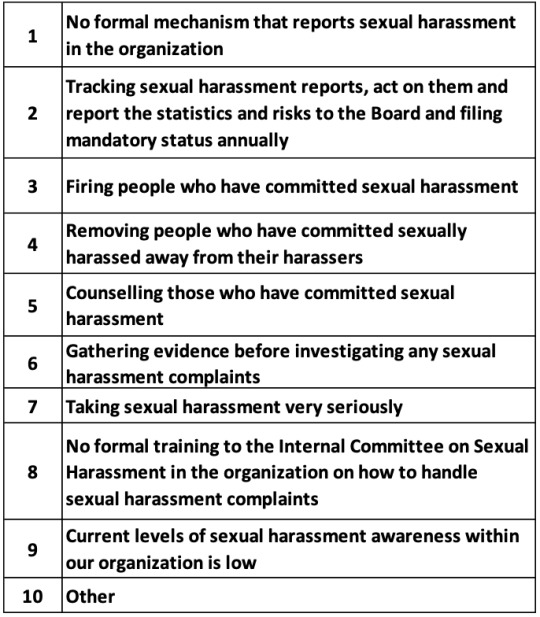
Analysis:
The positive trend of taking Sexual harassment seriously bodes well. However, the large majority of 66% looking at firing the perpetuator does not speak well on the process being followed, the role of IC, being fair and just in the investigations and the ability to handle the investigations sensitively & in full confidentiality
Comments/ Recommendations:
Making a safe and respectful workplace requires work across the entire organization and across all levels. PoSH should not be considered just as a compliance issue but an opportunity to create a culture of inclusivity. It should be practices not just in letter but in spirit. The role of IC needs to be taken very seriously since they are the conscious keepers to prevent, prohibit and redress any sexual misconduct. A Senior leader other than HR can be the Champion and Sponsor for this.
According to Chirag Patel, Co-Founder of Stratefix Consulting, the scope to improve the level of awareness on PoSH exists. There is a visible shift in perspective within employees that should act as a catalyst for organizations to put in place a relevant sexual harassment policy, processes & redressal mechanisms. The framework to implement a robust and sustainable PoSH structure must be across the organization. It will help build safe, respectful workplaces and positively contribute to a culture of inclusivity, where productivity thrives and prevention of sexual harassment becomes a norm. The directive towards Sexual harassment should be of zero tolerance and necessary action taken decisively, sensitively, and confidentially. Our aim with the study findings is to set in motion the right advocacy, needs and policies so that physical & virtual workplaces for women and all employees become safer and more inclusive.
0 notes
Text
3+3 Inventory Management Strategies
“You do not rise to the level of your goals. You fall to the level of your systems.”
In this competitive mark, handling inventories and meeting customer expectations is an additional task that can cost the management to the limit.
There’s no arguing that inventory management is critical for any modern organisation. Without proper inventory management, your firm risks upsetting its consumers, losing important sales, or investing in products that will not sell. As you can expect, any of these scenarios will be counterproductive to your growth and can be highly damaging to your bottom line.
The more inventory a company has, Less likely they will have,
“What they want”!
– Taiichi Ohno

Inventory management tactics are used by both large corporations and small enterprises to maintain their operations effective and profitable. In this blog post, we’ll discuss three key inventory management approaches, as well as how inventory management software can help you manage your inventory more effectively.
3 must-know inventory management strategies
The push technique, pull technique, and just-in-time approach are the three most common inventory management strategies. These methodologies provide firms with various options for addressing client demand.
Continue reading to find out more about these three inventory management strategies:
1. The Push Strategy for Inventory Management
The push strategy is a type of inventory control in which things are “pushed” down from the manufacturer to the store, warehouse, or business. A consumer or employee will then purchase or use the item from the inventory on hand.
In order to successfully use the push approach, a company must accurately estimate product demand. Understanding how much of a product is required and at what time of year is critical. Using inventory management software lets organizations evaluate how inventory has been used over time, providing crucial insights into how much inventory they may need to acquire during the calendar year.
For example, an electronic store may stock dozens and dozens of air conditioners and coolers in the spring and summer, but only a few in the winter. These retailers decide how many air conditioners and coolers to purchase based on how many they’ve sold previously and when. The push method is ideal for companies that can precisely estimate client demand.
Hint: Push Strategy works far better only and only if the prediction of requirement is better and more accurate based on Previous data. This Inventory Management style helps organizations to fetch the best of the best rate.

2. The Pull Strategy for Inventory Management
The pull strategy is an inventory management system in which a store, warehouse, or corporation only “pulls” an item when a customer or employee orders it. Instead of moving down the supply chain, an item climbs up which can take a long time!
Many furniture-making shops, for example, are “pulled” only after consumers have handed over their payment cards. These people choose their furniture from a reference or a website, and the final furniture is either created or procured for them at the time of purchase. Customers are usually fine with it taking months because it is an industry standard.
However, the pull method is not for every firm, especially if clients can get identical goods from another source right away in a short time
Hint: The pull technique is typically used for specialty items, costly items, or items with little or unpredictable demand.
3. The Just-in-Time Strategy (JIT) for Inventory Management
The pull strategy is related to the just-in-time inventory strategy in that organization’s order inventory “just in time” to fulfil a customer’s order or a company necessity. Of course, adopting a just-in-time inventory management plan successfully necessitates dependable suppliers, vendors, and third-party logistics partners. Without them, a company may be unable to meet customer demand, which is almost always a prescription for disaster.
Just-in-time inventory saves firms money by reducing inventory carrying costs, reducing headstock, and improving cash flow. Companies that rely on JIT inventory, on the other hand, are not always able to satisfy demand and may have to overpay for a product to deliver it to their consumers promptly.

Apart from that, there are 3 More Inventory Management Techniques which are prevalent in the Market :
ABC Analysis:This method works by identifying the most and least popular types of Inventory. This method of inventory is segregated based on Consumption and Investment and then given the classification of A, B, and C which will define the focus area on inventory which is highly consumed and has a high cost.
Batch Tracking:Particularly, Pharma and FMCG manufacturers use this Inventory Management Technique where the focus is to build groups of similar items to track expiration dates and trace defective items.
Cross-Docking:
This technique focus on eliminating the warehouse by unloading the Inventory directly from a supplier truck to the delivery truck.
What Next?
No matter what method of inventory management your business practices, experts can help you practice better, faster, and less stressful inventory management and control. Stratefix consulting is a top-rated firm that can help you get organized fast, even if you’re in over your head.
Remember the words by Rhonda Adams,
“Inventory is money sitting around in another firm.”
0 notes
Text
Critical Reasons for Process Improvement Failures
“You do not rise to the level of your goals. You fall to the level of your systems.”
70% of complex, large-scale process improvement programs fail more often than people would like to admit. The most difficult part of work process improvement isn’t figuring out what to do – It’s figuring out how to do it.
The most successful organizations are those that are never pleased with the status quo. Instead, they’re always looking for different paths to make their processes more efficient.
However, not every ambitious action delivers measurable results. Some fizzle before they even gain steam, costing organizations time, money, and brand reputation.
“Without change, there is no innovation, creativity, or incentive for improvement. Those who initiate change will have a better opportunity to manage the change that is inevitable.” – William Pollard, Physicist
Why do process improvement projects fail?

1. “Problem Statement” can be one of the Biggest Problems
Many organizations are so keen to improve the processes that they jump right into recognizing pain points and diagnosing root causes.
However, it’s important to truly understand where the misalignment is transpiring, rather than jump to conclusions. In your hustle, you might alter the wrong processes.
We advise taking the time to build the right team and analyze the right data to truly identify the root cause of a situation. This way, you can make sure you’re correcting it at the source, rather than simply concealing the symptoms.
“If you are unable to understand the root cause of the problem, it is impossible to solve it.” – Naoto Kan
The first step is mapping your existing processes at a high level. During this time, you might also want to concentrate on value stream mapping. Regardless of your strategy, an understanding of your current circumstances will help you identify the true root causes of your pain points.
Key Insight – Finding the root cause of a problem is necessary. You can do it by involving the right people, studying the process, and collecting the right data.

2. Lack of stakeholder involvement and absence of a problem-solving culture
A Process without People is just a Process on Paper.
Not involving the right or senior stakeholders is likely to be the biggest stumbling block for the majority of companies looking to implement constant improvement.
Without stakeholder support, it is very unlikely that your project will even get off the ground. But, for continuous improvement to really be thriving, it is necessary that all of your key stakeholders are included and engaged from the very beginning
Do your employees feel comfortable sharing ideas? If not, you can’t change the way you drive your business.
For the improvement process to succeed, there must be more than just a few people involved. All departments and seniority levels should work together to identify processes that should be optimized.
For example, your employees might notice inefficiencies in your legacy systems and propose that cloud ERP software could help you centralize and consolidate your data.
In other cases, your frontline workers might notice that your customers are routinely running into the same roadblocks, so they share ideas for ways you can improve the customer experience.
Key Insight – Acquiring insight from people in the process helps everyone understand the problem and the process accurately. Also, the root cause becomes easily identifiable and ensures the right solutions are executed.

3. Lock your process improvement
When taking steps for improving the processes, the old way of doing things simply won’t cut it. You’ll need to figure out how to make your processes and systems more efficient. No matter what industry you’re in.
Adapting modern IT tools and software can enable organizations to unlock insights and business value while lowering costs, future-proofing infrastructure, and improving agility. Luckily, there are several process improvement tools out there that can help you drastically improve your business.
To Unlock the sustainability of Processes, You need to Lock it with IT based solutions.

Document management systems, time-tracking, and migrating on-premises applications to the cloud and modern cloud-native platforms can be a savior on your journey of process improvement. Figuring out such helpful IT tools, approaches and knowledge will prevent you from being a part of the vicious circle of process failures.
Key Insight – Leveraging modern technology and tools to manage things won’t allow the repetition of past mistakes in the process of improvement.
If North Star is defined, Process Improvement is not more difficult than you think
When you have a north star guiding every project decision, you can ensure you’re improving the suitable processes, executing the right technology, and selecting the right path for your company’s future.
Stratefix Consulting can be your North Star too.
0 notes
Text
Stratefix Consulting reported 93% of MSME entrepreneurs confused about HR.

Employees are an important capital for doing business in the 20th century and the HR department was created to make the most use of this human capital investment.
A survey of 1000+ Micro, Small, and Medium-sized (MSME) Entrepreneurs was conducted by a management consulting firm named Stratefix Consulting, holding more than 12 years of extensive experience in the field of HR Consulting.
Core Objective of Survey :
This Market survey was designed and executed to map the present understanding and clarity about the role of the HR Department from the angle of MSME Entrepreneurs.
Important Topics covered under this survey from the perspective of MSME Entrepreneurs:
Top Most 2 important roles of an HR Department
Is the thinking and focus of the HR department more inclined towards the employees and less towards the Organization?
The purpose of setting up the HR department is being fulfilled or Not?
How responsible is the HR department for Organization’s Growth or Degrowth?
Do you think, your company’s HR should be aware of the financial information about the company: Turnover and Profitability?
Survey Point 1: First and Second Priority among all the Roles of HR Department

What is the important role of the HR department?
The options for answering this question were given below
Recruitment of employees Improving employee efficiency
Taking care of the convenience of the employees of the company
Staff Training
Resolving employee grievances
Do you think, you have 100% clarity about the role of the HR Dept.?
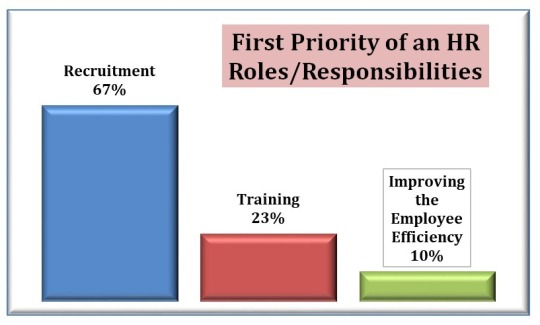
First Priority of an HR: 67% of businessmen believe that HR’s first role is to Recruit Employees and build up the right team for the Organization while 23% has choose Staff Training and Only 10% has chosen the option of Improving the Employee Efficiency
Second Priority of an HR: 54% of Entrepreneurs believes staff training is the 2nd most important role while 26% Business owners believes, the second most priority is Resolving the employee grievances
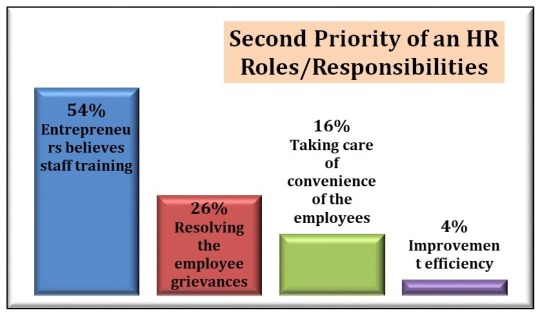
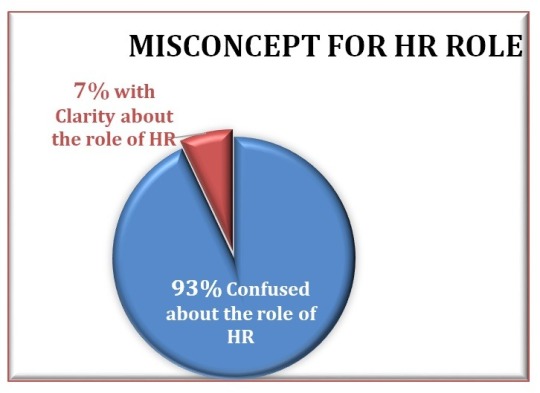
93% of business people openly admit that they are not 100% clear about the exact role of HR.
Survey Point 2: The attitude of the HR department is more inclined towards the employees and less towards the company.
According to 71% of business people, the HR department is more inclined about employees’ interests and less towards the company while HR’s important role is to maintain a balance between employees and the company.

Survey Point 3: The purpose of setting up the HR department is being fulfilled or not?
Only 23% of business people feel that the goal of setting up an HR department is coming true otherwise for rest 77% are still dreaming of the Productivity of the HR dept.
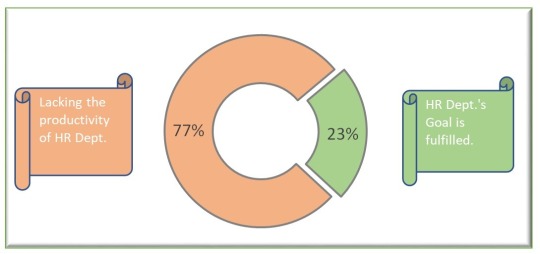
Survey Point 4: How responsible is the HR department for Organization’s Growth or Decline?

Surprisingly, according to a survey conducted by Stratefix Consulting, Only 18% of business people believe that the HR department is majorly responsible for the company’s progress, profit or loss, good or bad times.

Survey Point 5: Do you think, your company’s HR should be aware of the financial information about the company: Turnover and Profitability?
According to 58% of company owners, their company’s HR is not aware of the company’s turnover and profit. They believe, the HR department does not need in-depth information about the company’s financial statistics.

According to Chirag Patel co-founder of Stratefix Consulting,
Ignorance about the HR department by MSME is obvious as HR is a concept developed in the last Few years while 50% to 60% of small and medium-sized businessmen have completed their education before this period.
At the same time, confusion or not having clarity about the role of the HR department can be dangerous for MSME in today’s era as Human Asset is the most crucial asset of the Organization.
Most Importantly, Over the last few years, there have been many changes in the needs of employees in the company. Pay scale is no more the first reason to stay or leave the organization as many other critical parameters are scrutinized by People to sustain their present job like:
1. Right Culture of Learning and fun while working
2. Present Role’s suitability considering Future of Talent
3. Perks and Facility apart from Salary
Let’s Accept the Bitter Truth: Days are gone when Only Employers were choosing the Employees. Employees are also being choosy in selection of Organization, Role and Culture.
0 notes
Text
3 * 5 Objections Handling in Sales
“Sales are contingent upon the attitude of the salesman – not the attitude of the prospect.”
– W. Clement Stone.
As a sales representative, you sell more than a product; you sell a positive change – a future state. You sell the idea that your prospect’s problems will disappear and their life will improve due to their purchase. This principle is applicable for everything, whether you’re selling a car or an entire CRM system.
Now, suppose you’ve spent weeks and weeks on your Sales Pitch, created a list of potential clients to reach out to, and In the real world, you face a series of rejections, what will be your next move?
Rejections are nothing but Poorly handled Objections.
Sales Forces earn gets burnt with the sentences like :
We don’t have the budget.
We’re already working with another vendor.
We shall get back to you.
Not Required as of now
Fortunately, there’s nothing to worry. Sales objections are usual.
As well said, “No objection from a client is one of the biggest Objection.”
However, It can be a roadblock when you’re trying to move prospects through the pipeline. You might get demotivated due to objections and remove that potential client from your list. On the contrary, Let’s Learn how to handle the Objections with Smart Answers.
3 * 5 Objections Handling :
Hereby, we are sharing 3 Commonly used Objections with 5 Unique Answers of each question.

Objection #1: “Your product is really amazing but is too expensive. We don’t have this much budget.”
Or other players/competitors are giving at quite lower rate.

Hidden Voice of Customer : Your Value Proposition is low.
5 Stratefix’s Smart Responses (SSR) :
SSR 1 : Yes, it seems to be a huge amount at first glance but Let me show you, how much cost effective it can be in a longer run.
SSR 2 : Can you share me 2 things that you feel, you have purchased by overshooting your budget? Why? – Explain the value you have gained from such purchases.
SSR 3 : Let me show you, how you can achieve gain from this purchase or save your cost immediately.
SSR 4 : My more than X% of customer are those who has purchased such kind of product at much cost effective rate, not satisfied with them and now they are with me.
SSR 5 : Have you ever counted your time involvement and hassle of repurchasing the product again and again.
Common Mistakes By Sales Person : Price objections are the most common in any sales pitch. They are even voiced by prospects who have the intention of buying. Don’t bargain over the prices, instead, circle back to the product’s value.
Objection #2: I’LL GET BACK TO YOU.
Hidden Voice of Customer: It’s sugar coated version of “Get Lost”.
Another objection can be, Just drop me a mail.
If one can read between the lines then the statement is as follows: Just drop me a mail and then wait for years to get revert from me.
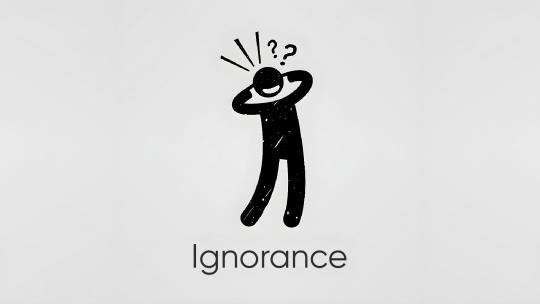
5 Stratefix’s Smart Responses (SSR) :
SSR 1: May I know, What can be the challenges you face in buying this product or taking this services?
SSR 2: I would like to have some more idea about your need.
SSR 3: If you can spare a minute more, I would like to request you to share your opinion about our Product – How can we be helpful to you?
SSR 4: Rather we taking follow ups again and again if you are interested to know more about us, Can we schedule our meeting on 12th June, Friday, 3 pm?
SSR 5: May I know, If you will not buy this product/services within this month, how will you handle the situation?
Common Mistakes By Sales Person: Often, Sales person treat it as follow up call but either Customer has not heard you properly or not in urgent need or have some other options in the mind and don’t want to explore you.
Objection #3: We are not looking for the same.
Hidden Voice of Customer: Make me understand well
Such objections may come in another forms as well :
Your product will not help me.
I don’t need it.
We may need it in future.
This isn’t important for me currently.

5 Stratefix’s Smart Responses (SSR) :
SSR 1: What other feature in this product can solve your problem immediately?
SSR 2: If you will not buy, how will you handle the worst situation that may arise like…
SSR 3: A well known player in similar industries are already using this product and taking great benefit of it
SSR 4: It’s okay if you are not looking for the same, Let’s sit down and define what all problems can be solved with this product
SSR 5: If you can connect me to relevant member in your team who can explain me your pain areas in detail and then we can meet up later to understand, how we can be helpful to you.
Common Mistakes By Sales Person: In more than 80% of cases, Customers deny to purchase even tough they have need because of
Lack of credential
Lack of time to understand
Not having clear understanding, how you can solve their Problem
On the whole, sales objections are the pushbacks from your prospects!

However, efficient objection handling is a way that can change the mind of the prospect or alleviate their concerns. Though, trying to pressure them into backing down isn’t a true objection handling. Instead, helping and persuading them to come to a different conclusion on their own accord will be the right way to handle the objection.
A Message to the Readers : We are ready to hear some more Smart answers from you as well!
0 notes
Text
Balanced Scorecard
“The Balanced Scorecard provides managers with the instrumentation they need to navigate to future competitive success.”
– Robert S. Kaplan
The balanced scorecard (BSC) was brought up in the 1990s. It quickly gained popularity among organizations, both large and small. This revolutionary management tool turned the traditional focus on revenue and financial health into a more holistic approach towards the business’s performance.
According to a survey, 80% of balanced scorecard organizations reported improvements in their operating performance.

What is a Balanced Scorecard?
The Balanced Scorecard is a management system for enhancing business performance.
Basically, it is a framework to execute and manage the business strategy. It connects a business idea to strategic objectives, measures, targets, and initiatives. Also, it balances financial measures with performance measures and goals related to all other parts of the organization. All in all, it is a business-performance management tool.
Turning strategy into action
A balanced scorecard helps to break your big, fuzzy strategic vision into specific, actionable steps.
More than just money
Businesses often judge their soundness by how much money they make. However, the financial measures tell only the short-term part of the story.
A balanced approach
The name “balanced scorecard” comes from looking at strategic measures to get a more “balanced” view of performance.
A basic breakdown of the balanced scorecard framework
Any organization must first begin with objectives that can be broken down into four distinct perspectives that are connected uniquely :
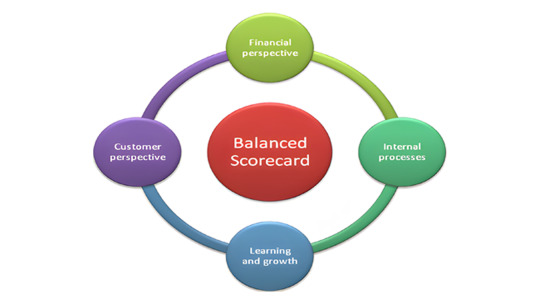
Financial goals
Though financial health is the result of past decisions, it’s still incredibly important.
What financial goals do we have that will influence our organization?
Are you making money?
Are your shareholders happy?
Customer goals
This talks about how well you are serving your customers and your organisation’s
stakeholders.
What things are essential to our customers, which will, in turn, impact our financial standing?
Are you winning new business?
How about keeping your existing customers happy?
How are you viewed in your industry compared to your competitors?
Process goals
It focuses on how well your internal processes are operating.
What do we need to do well internally to meet our consumer goals that can affect our financial standing?
How quickly can you adapt to changing circumstances?
Are you providing what your customers actually want?
People (or learning and growth) goals
This perspective looks at organizational performance via the lens of human capital, culture,
technology, and infrastructure.
Is everyone having access to training and continuing education opportunities?
Are people aware of the latest industry trends?
What are you doing to ensure your organization stays ahead of your competition?
A quick cheat sheet to a Balanced Scorecard
As per the definition above, if you build a Balanced Scorecard, you’re going to hear these
words more often – “objective,” “measure,” “initiative,” and “action item.”
Here’s a quick view of how these items work in a Balanced Scorecard:
Your high-level goal in mind is your objective
“How will I know that I’m achieving the objective?” are the measures
“What actions am I taking to accomplish the objective?” are the initiatives
Action items help task out small jobs that will allow you to complete your goals
Thus, with a Balanced Scorecard, you have the ability to:
Define your strategy
Measure your strategy
Keep track of the actions you’re taking to improve upon your results
Partnering with Stratefix Consulting to create your own balanced scorecard
At first, it can seem a little confusing; however, the Balanced Scorecard isn’t that complex. It’s just a way of looking at your organization that focuses on your strategic goals.
The beauty of the balanced scorecard is in its flexibility and simplicity. With the help of Stratefix Consulting, you can quickly structure a strategic management system that works seamlessly across the entire organisation.
0 notes
Text
Top Mistakes to Avoid for Successful ERP Implementation
Enterprise resource planning (ERP) solution is a key prerequisite for every business process.
According to a survey, 88% of companies have found their ERP implementations as a drastic failure!
But the question is, Why?

Earlier ERP systems were planned merely for large-scale manufacturing companies for maintaining their processes at ease. However, now, ERP systems are essential for all types of organisations
What is an ERP Implementation?
ERP implementation represents the end-to-end process of:
Collecting business requirements
Determining the right software platform
Configuring the integrations
Migrating legacy data
And finally, deploying the new ERP system
However, ERP systems require regular updates and maintenance to ensure they function seamlessly. It focuses on successful change management by assuring that user needs are considered at each stage and are trained in how to use the system.
” On one hand, a properly executed ERP system can lower operational cost by minimum 12-18%% and administration costs by minimum 8-10%. “

” On the other hand, up to 50% of ERP implementations fail the first time, around 64% of ERP projects go over budget, and 30% take longer than expected.This disrupts the business operations and of course, leads to a big loss! “
Example of failed ERP Implementation
Conceivably one of the famous ERP implementation failures was that of “Hershey’s Chocolate” in 1999.
The company rushed to deploy its ERP implementation period in 30 months rather than the suggested 48 months due to the looming Y2K panic.
As a result, the company’s various departments clashed with one another, resulting in failed data migration, systems testing, and training.
In the end, Hershey’s horrid problems prevented it from delivering $100 million worth of chocolates (despite having that product in their inventory) for Halloween that year and caused the stock to dip 8 percent.
The disastrous failure of the project was due to poor planning which caused the business to develop software that would “not be fit for purpose in the emerging digital world in which it operated.”
Common mistakes you should avoid for successful ERP implementation
Mistake#1: Investing Without Research and a Strategy
Many businesses don’t spend enough time in the planning stage.
They often underestimate the time and resources required to implement a new ERP solution.
Thus, failing to identify critical issues with their processes before migrating to a new ERP solution.
Best Practice – ERP implementation is about change – it’s about optimizing, automating, and streamlining business processes.
Thus, map out the goals of the business with the ERP system, analyze end-to-end business architecture and re-engineer processes to create a seamless integration from the customer to the back office.
Mistake#2: Poor data strategy
Data plays a crucial role in helping you make intelligent decisions. You need to analyze how it can be aggregated, unlocked, and aligned with the new ERP system. Thus, vague or incorrect data, won’t provide value in decision-making.
Best Practice – Plan how to integrate data from the ERP system to provide a complete view of business processes.
Mistake#3: Not putting the business in the driver’s seat
If you’re trying to digitize the ERP project, you’re doing it wrong! An ERP project drives innovation and creates new revenue opportunities for the business.
This is why an ERP project should never be led by technologists; it should always be led by the company.
Best Practice – Involve the business leaders or managers in the process. Encourage them to identify pain points, prioritize areas that can be improved, and create an achievable wish list.
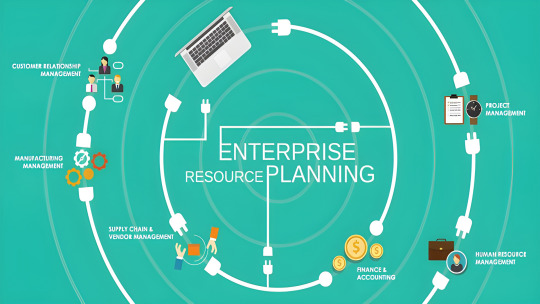
Mistake#4: Not having a maintenance plan
To function optimally, ERP systems need proper maintenance. A maintenance strategy for the ERP systems ensures that users apprehend how to maintain and improve the ERP system on a regular basis.
Best Practice – Setting up a maintenance plan to avoid any extra cost or loss of productivity to the company due to the ERP system.
Make your ERP Implementation a SUCCESS with Stratefix Consulting
The ERP implementation process can be a tedious task at first glance.
Fortunately, the experts at Stratefix Consulting can help you overcome ERP implementation challenges efficiently!
We offer companies an all-in-one platform that helps speed up software adoption through training, onboarding flows, and on-screen guidance.
Let us help you maximise the benefits of new software by boosting employee productivity through automation today!
0 notes
Text
Mistakes not to repeat while strategic planning

Well, how many times have you heard the word strategy? Innumerable times, right?
Strategy, “they,” say, is what you need to get from Point A to Point B. However, one of the most common complaints we hear from managers in big and small companies is the failure of their strategic plan.
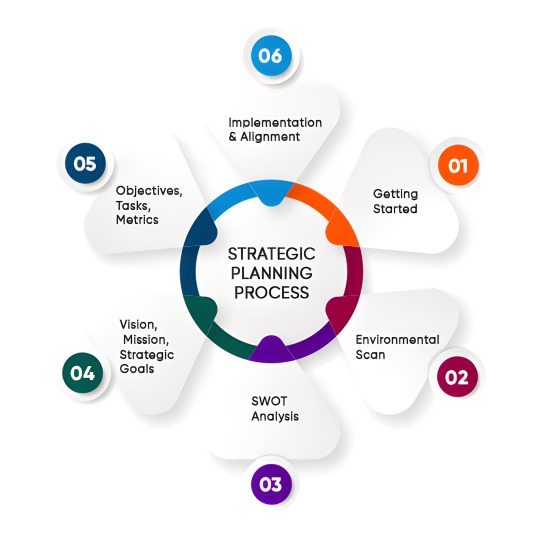
Many studies have concluded that most strategic planning fails, up to 67 percent actually.
Why?
A company’s strategy is that glossy document which is considered important always, yet, it still remains something that is assessed just once a year!
When planning, it sounds good and everybody thinks the organisation is going to get there.
However, to implement brilliantly, the strategic plans need to adapt in real-time to the ultimate vision to be realised.
For example, McDonald’s salads failed to sell!
Wait, what? McDonald’s is a quite flourishing corporation, how is that a failed strategy example?
In 2005, McDonald’s decided to launch a range of healthy salads because it was facing increasing pressure about their high-fat meals. This seemed like a smart idea but the customers didn’t enjoy the salads as much as they did fries and burgers.
McDonald’s reacted to this by adding the flavors to the salads – sauces, dressings, fried chicken meat, etc. However, it increased the sales by around 1% only! Thus, the salads were unlikely to be a major source of revenue for McDonald’s.
Reason for McDonald’s strategy failure: Their goals were not clear and also ! They didn’t really focus on why they were doing it, and what problem they were trying to solve
If you’re noticing a continuous failure of your strategic plan, here are the top 3 mistakes to avoid while planning one!
Failure is nothing but a “Chance to Revise” the Strategy.
Top 3 mistakes to avoid while crafting a strategic plan
(1) A long wish list of goals
Plans are made to achieve a long wish list of company goals, ranging from pie-in-the-sky to mundane. However, too many goals can make things unclear.
The issue to narrow down prioritised goals to a manageable and achievable level
Poor execution of plans
The increased pressure of work on employees
Statistics : Based on Survey of 300 Organization and Over 3000 Employees by Nielsen (International Market Research Firm), Only 5.7% of Employees could speak up the GOAL of Organization, 3 Months later from setting up the GOALs.

Instead of ten, try to focus on five smart goals because i’s easy to see how a long list of goals can inhibit implementation success.
(2) Lack of enrolling conversations
No matter how good your strategic plan is, a lack of communication between management and employees can hinder its success.
Statistics says, Only 5% of employees are aware of and/or understand their company’s strategy.

Otherwise, Manier GAPs are there in this domain e.g
The team is not aligned with the company goals
No regular conversation with various business stakeholders
Employees feeling left out
Lack of accountability
Job descriptions not aligned to desired strategic outcomes
Your interactions will collectively determine the ultimate success of the strategic plan.
(3) Avoid Building Strategies based on your Gut feelings
Gone are the days when Entrepreneurs used to create strategies on New year opening based on past experience and gut feelings.
Statistics: Over half (61%) of senior executives acknowledge their organizations do a poor job bridging the gap between strategy formulation and day-to-day implementation.

Strategy is not a Strategy if
It is not based on a clear set of choices
It does not tell you what you are going to do
All in all, you should avoid the “Trial and Error” method of planning
Trial and error is the downfall of many managers who think that simply testing a variety of tactics can lead them to success.
The trial and error method seems compelling when:
The objectives are unclear
Not having the right participants to guide
Lack of sustaining a strategy
How costly can your strategic planning mistakes be?
It may inadvertently benefit competitors, maybe they outpace you
Fail to resonate and influence the target audience
Increased expenses
Waste of time and resources
Lower productivity and decreased employee engagement
Quit the old way of strategic planning with Stratefix Consulting
So how can you increase the likelihood of your strategic plan succeeding?
There are many blunders that can bring a good strategy down. However, at Stratefix Consulting, we can help you turn those ideas into an implementable plan!
Have a Successful Strategy!
0 notes
Photo

21/90 Strategy Sustenance
Today, 90% of business strategy success depends on its sustenance, Right?
However, coming up with a strategy that can work is not the only part of the battle – implementing and up-keeping it is a whole different challenge.
At the same time We can't survive without sustenance of strategy,Let us elaborate the "Why" of this line:
You may not have realised it, but the majority of sustenance strategies have failed to bring changes to the culture and habits of the overall organisation.
If an organisation’s culture hates changes, for sure, it hates frequent changes too, while we can’t grow or even survive without changes.

Change is inevitable in the era of digitalization so one can imagine survival without bringing change to the organisation.
So the message is clear: If one can’t sustain one strategy, they have to adopt the mantra of “What Next?”
In such a manner, frequent changes in strategy bring lethargic chaos where after frequent changes, the team will react as a short-term plan.
Even in such an environment, retention of talent can be a big question while survivors won’t be able to focus on growth and development but focus on trying to adopt the new changes.
In short, survival and sustenance are the synonyms of growth.
"Survival is a first growth strategy"
— Ian Hogarth
Sustenance comes with a lot of pain starting from top management to down the line, starting from leaving old habits to adapting the newer ones.
Sustenance welcomes all the key benefits to organisation
Improves ROI
Effective management of resources
Excellent client experience
Provides competitive edge
Promotes innovation
Still, we fail to uphold the plans because of poor habits of not taking accountability for things, getting work delayed, making excuses and the list continues!
Let’s Accept the Fact: Cultivating New habits and embracing new changes can bring sustenance of strategy.
“How?” can be answered by learning the magic of the 21/90 Rule because “Breaking an old habit will take some time but adapting one will take only 21 days!”

4 Step Approach for 21/90 RuleStep
1: Pick one habit at a time
Decide what you want to achieve or change.
For example, if you want to drop fat and get more fit by exercising daily.
Here dropping the fat and being fit can be different outcomes but one habit of doing exercise daily can be the first habit that you need to cultivate.
Step 2: Start Small
The 21/90 rule helps you to start small.
To achieve your fitness goals, if you don’t want to spend hours in the gym, run for just 20 minutes a day but every day!
Step 3: 21/90 Reminders and Respect to Reminders
Set reminders for the first 21 days daily, specifically to those gadgets that you follow, mobile, laptop, smartwatch, or maybe your spouse!
Because often we forget to follow what we had started rigorously!
Also, we just don’t snooze morning alarms, but
We snooze our morning workout
We snooze our full-day energy
Most importantly, we snooze our own “Commitment”
In short, respect your reminders and follow them like God.
Step 4: Monitor your progress and enjoy the small wins
Look how close you have got to your main goal of being healthy and fit.
Question yourself:
Was I able to exercise daily?
Did it help me to get more fit?
Is it fitting in my daily schedule?
Thus, celebrate those small wins, get confidence and you will believe in yourself to work on more effective tasks.
Thus, Strategy Sustenance Is Not An Overnight Process But A 21 Day Plan
Several obstructions affect an organisation’s ability to adopt a strategy.
However, the way to win on any task, no matter how big, is to start small.
We at Stratefix follow the 21/90 rule to implement anything new. If your company ready to successfully sustain its long-term strategic goals? Get in touch with us to implement the wonderful 21/90 day rule!
Let’s get the ball rolling!
0 notes
Text
Data speaks a lot, especially in sales

“Where there is data smoke, there is business fire.” — Thomas Redman
Imagine you wish to buy a nice pair of jeans and you told your bestfriend Google about it and BOOM! Facebook already knows that your dream pants are one click away on Myntra! It’s not imagination, it’s the reality of the digital world we are living in.
Notice the catch?
Even your likes and dislikes are being understood, interpreted and analyzed before your favorite brands have hooked you in. Infact, that’s how they reached there; they know you before they sell you!!
After all, sales is about Product -> Market -> Buyers. The amount of data in this era is insanely rich and successful companies know that it’s a gold mine to dig so you can fuel up your sales to rocket highs.
One such great example is Netflix!

The company successfully used predictive analysis in order to make an intelligent shift from delivering prepaid DVD mails to online streaming of movies & shows.
Not only this, the company focused on data-driven algorithms to influence customers from high-demand blockbusters towards the underrated Netflix library.
Data analytics played a key in understanding the customers better. This is how Netflix invested over $100 million on its own original series “House of Cards,” a Netflix original series, debuted in 2013. Results? The thriller has been a huge success since, with over 8.7 IMDb rating with millions of viewers around the globe.
So what more does data tells you, here’s what:
Images is required in all the following points…plus make it very short and crisp like 3-4 lines where quote, facts or catchy lines are there….
About your customers: The customers are the real bosses to listen to if you really want to upscale your game in the business. Data analytics tools can help to predict customer’s likes, dislikes, behavioral purchase based on the history of past orders and also can automate consumer interaction with pre-sales questions thereby multiplying lead generation.
About your competition: Since you’re not the only one providing the services in a space, the only way to outplay your competitors is knowing them closely. From market statistical analysis, pricing structure to cooperative analysis and market insights from the prospect’s POV, data can tell you where exactly you stand in the race. For instance, big data analytics can help predict the impact of the competitor’s move on the market.
About your own progress: It is crucial to be your own biggest competitor. Data helps to monitor everything, from strategies implemented, analyzing the results, the market feedback, how consumers perceive your brand and even identifying the bad decisions which affect the sales. It tells you how far you have come along with keeping tracks of the mistakes and miracles so you can learn and improve.
About your place in next 10 years: Forecasting your business goals is easier with data driven methods. Scaling the sales becomes easier with predictions based on present and p Analyzing and optimizing your data can also help you in predicting market dynamics as to how it will be evolving in coming years. Based on such statistics, a company can make use of predictive analysis algorithms to determine required changes, improvements and probably revolutionize the present sales techniques.
So, what happens if you choose to ignore when data speaks to you?
A billion dollar company can go bankrupt. And It’s none other than Kodak!
Shorten the example of Kotak……..

By the 1980s, Kodak created over a $10 billion market in the space of photography and established a monopoly with over 90% of market share. 32 years later, by 2012, the company declared bankruptcy. The reason? Digital photography, which was invented by its own employee, Steve Sasson in 1975, soon dominated the market. While Kodak ignored innovation & market dynamics, its competitor, Fuji Films understood the value of innovation, prioritized consumer responses and optimized the market dynamics to tailor their products.
Here are the red flags Kodak deliberately overlooked while the data was right there:
Kodak ignored the growing demand of digital photography and did not take any measures despite the data suggested the booming sales of digital cameras.
The company failed to analyze the strategies of the competitors and ignored their evolving impact on the consumers.
It completely turned a deaf ear when it came to listening to the existing customers. The data clearly stated the value for money as the digital photo was 20% cheaper and higher in quality. The consumers got better options and hence drifted away.
The company also made the greatest mistake of ignoring the market dynamics over a period of 10 years and didn’t implement needed strategies to pace up with the competition and demand.
In conclusion, do not ignore when data speaks to you. Listen, analyze and act!

So, If you are ready to dive in the ocean of data and find hidden gems of data-driven success, we are here to share the big jump with you! From market and corporate research to helping your sales team to get automated with data driven tools, Stratefix got you covered. We not only helps you in processing important data but executing it with right strategy !!
0 notes
Text
The Powerhouse- How To Manage The Top Talent

"Identify Talent For Tomorrow, Rather Than Just Hire For Yesterday."
Managing top talents needs talent. Understanding them, and their perspective could be a tricky space. But first of all…
What does a top talent really mean?
In one line- basically the toppers of the class.
These people are encouraged more, motivated more, and everybody keeps their hopes on them, even the backbenchers.
Similarly, in a company top talents are the people who lead others by example. They’ll often shine amongst other talents. They are value creators and growth mobilizers. Their responsibility quotients are really high, and they understand the fact that, even though it might not be their fault, it is still their responsibility. They are ready for challenges, are enthusiastic about exploring other things. They put their questions and their reservations forward with ease. They also challenge the existing state of affairs and tries to bring a more reformed system in place.
Some lesser-known traits of top talents.
Their sole focus is not money. What they really seek is the value they give for their contribution. Becoming a powerhouse is not their goal. They just want to do their best, but lack of communication definitely derails them. Top talents aren’t the solution to all your business problems. They are creators of a value stream that gives your business an upper hand in terms of a productive future. Replacing the owners is not their aim. But they’ll definitely fill up the void that the business owners sometimes overlook. They don’t fear taking up the responsibilities unless they are part of decisions & can envision their personal growth.
But managing them could be a bit tricky, since the more they excel, the more are they willing to find a new workspace too. And that’s fair since a work environment with no challenges is similar to a weekend with no plans, it’s plain boring!
But we’ve got you covered. Here are a few tips to manage your top talents-
Give them a Comprehensible Mission
There’s nothing more maddening than an unclear brief/mission. People who are good at their jobs need to look at the target they are hitting. Shooting in the dark is something they don’t believe in. Show them a goal post, give them the ball, and see how they hit it right at the bullseye.
Let them take risks and fail
Where there’s a risk, there’s growth. It’s a universal fact, the more you fail at something, the more you get better at it. The least productive thing you can do for them is to keep them away from any failure or harm. Let them float in the open seas of probabilities, let them dive alone. They might cross the ocean or drown in it. Anyway, you are always there as a safety net. But this will increase accountability in ways unimaginable for them.
Serve them a perfect Challenges
Top talents thrive on challenges. The more challenges they get, the more they’ll shine. The only thing you should be mindful of are the challenges you present to them. If the level of challenges is more than one’s skills then the increase in anxiety is bound to happen. And if the challenges are too low as compared to the skills, then boredom is imminent. You have to find the perfect balance between them.
Open your pockets a liiiiiiiiiiitle
Although gratifications are the biggest motivations, yet nothing can beat the visual of a text that says ‘The amount has been credited’. No, really opening your pockets even a little can help you in ways you’ve never imagined. Talent, in reality, is priceless, what we can do, is just come close to what that term really means.
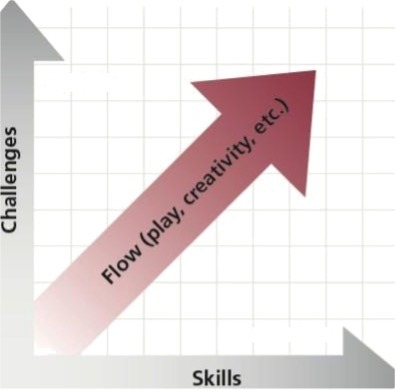
Most importantly- Trust them
Don’t go on micromanaging the talent. Give them space for errors, try to understand their perspective, and you’ll witness them bloom. Best case scenario, you’ll see how they nail that project; worst-case scenario, they’ll learn that they need to change their perspective. But whatever it may be, you’ll see your top talent fighting for the company.
“People will be at the forefront of strategy and talent management will be a critical component part.”
Yes, it could be a bit tricky to manage your apex employees. But when you notice in the long run, these are the people that actually make a difference. And Stratefix solely aims at doing that- To understand the talent and their capabilities. To help the companies grow with quality human force. We have an HR transformation service that emphasises on Improving the Retention Ratio, encouraging Intrapreneurship amongst Team Culture Development & Better Employer Branding and Enhanced Productivity against the investment. These are the few advantages that you get with Stratefix’s HR transformation service.
With Stratefix you’ll never have a hard time managing any of the talents.
0 notes
Text
HR as a business partner
“Human Resource is a source for all the resources in the company”
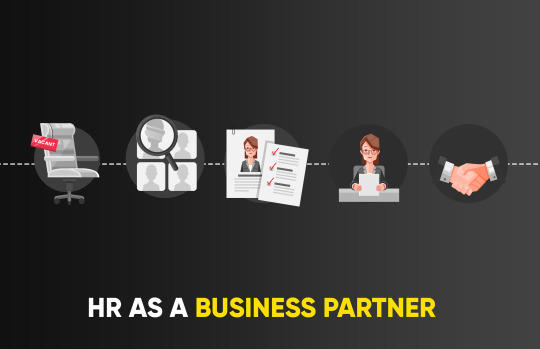
In your working life you must have come across the term HR or Human Resources. BAM! BUSTED! No, they aren’t just to organize secret santas, or to remind everybody whose birthday it is that day. It’s called a ‘resource’ for a reason. And probably the most underutilized resource in the company. Currently, HR is just used for day-to-day mundane administrative work like payrolls, recruiting and lots and lots of paperwork. Although these daily activities ultimately make a bigger impact in your company, and without it the company can go on a stand still. Imagine if there’s no HR in the company. There will be no quality hiring, no background check of the employees, the employees won’t be paid as per their talent, since HR can very efficiently identify the value of an employee in the company. HR holds the key to quality work in the corporate world.
But how about taking it a notch further, and understanding their role as a ‘strategic HR business partner’ 70% of the companies believe that the Human Resource Officer should be the driving force of their enterprise. But only 50% of the companies admit the Human Resource matches their expectations. This is because HR in most companies work in a bubble. They are just being limited to administering a small part in the corporate world. Whereas an HR business partner looks at the bigger picture. They oversee whether the HR policies fit the vision, wants, goals, and the model of the companies. They develop policies as per the companies’ goal, and not just implement a standard, common policy followed by all. Nor are they a C-Suite employee, neither a manager of human resource, they are more of an advisor or consultants who works to strengthen the inner structure of a company.
“Human Resource isn’t a thing we do; it’s the thing that runs our business.”- Doug Conant
Till now we talked about what is the function of HR Business Partner, now let’s talk about what their specific roles are- HR partners can build your organizational brand Although strong brands hire strong talents, we often forget that strong brands are built by strong talents. As per the company’s wants, and goals, the HR hires the talents, aligns them
with the company and the output is what builds the brand of the company. Through reward programs, through building a safe work culture, the HR indirectly affects your brand in a major way.
Make your business competitive
HR partners, through developing policies, strategizing with the C-suite players can strengthen the inner hierarchy which can in turn produce work that makes your business competitive in this cut-throat competitive culture.
Increases efficiency
Through using digital assets as a tool, HR partners can automate most parts of the processes which in turn leaves less time for the employees to file paperwork and more time in being productive in their own work. Thus increases the efficiency of the company as a whole.
Encourage leaders
A rational business partner would encourage leaders to handle the employees’ problems. They empower the leaders to make decisions regarding the employees. HR should not be the first go-to option, in fact it should be an emergency safety net of the whole process.
An HR business partner has to be the future in the enterprises’ way of deciding policies regarding its employees. They need to strategically work hand-in-hand with the company to determine the future of the firm and to build a really strong internal management. Stratefix’s HR transformation service solely focuses on that. It emphasises on Improving the Retention Ratio, encouraging Intrapreneurship amongst Team Culture Development & Better Employer Branding and Enhanced Productivity against the investment, are the few advantages that you get with Stratefix’s HR transformation service. Be a part of the future by making the HR your business partner, and not an administration service.
#hr#business#partner#businesspartners#humanresources#company#leadership#efficiency#business competitive#resources
0 notes
Text
Do’s & Don’ts Of Strategic Planning
The first 2 questions should be answered, even though vaguely, before Strategic Planning:
Strategic Planning with 2 Different Approach :
It’s a process of achieving the goals of an organization through setting up objectives, developing a critical understanding of the competitive environment, planning the strategies, and their effective implementation across the organization.
There can be two different schools of thought that understand strategic management from a different perspective:
1. Inductive Approach
This approach focuses more on developing the strategies.
It requires information and key stakeholders who are keener and more energetic towards innovation and bringing new strategies to the table.
2. Deductive Approach
This approach primarily deals with the practical implementation of the developed strategies. Of course, Strategic planning is required in strategy implementation steps too as many of the corners are kept untouched while the design part plus few strategies is prone to be changed when they touch the surface.
In this process, there is a requirement of stakeholders who are sharp in execution and know the algorithms of grassroots culture to take the strategy on the ground.
Traditionally, In the majority of the cases, Strategic Planning is designed
When we know everything about Strategic planning,
Why 93% of strategic planning gets failed in the execution phase?
Tradition Approach of Strategic Planning:
Based on Past Experiences
Based on the Gut feeling of Key Stakeholders only
Not in presence of any of the Strategy Expert
Let me share with you Do’s & Don’ts of Strategic Planning:
1. About Vision, Mission, and Goal
Do’s:
Define vision and mission statements clearly.
Set clearly pronounced goals and objectives.
Don’ts
Set the Goals without keeping an eye on the vision
In Most Cases, Goals are not matching with the long-term vision of the OrganizationAs said, a Good beginning is half work done.
2. Who should be present?
Do’s:
Total involvement of all the stakeholders is a must.
Active Participation can bring an excellent result.
Don’ts
Sitting for Strategic Planning without Data or information
Prioritize perception, abstraction, and intangible ideas over facts.
Key Stakeholders within the company are present
Actions:
Preferably, a Strategy Design expert or any third party’s presence can play a crucial role in designing the ground-level strategy .
Pl. inform, gather and analyze the required information before the day of strategic planning.
3. Optimistic Vs Pessimistic Approach
Do’s:
Let it be optimistic enough and set the Goals and actions on which quorum is established
Don’ts
The budget is not kept in focus while defining the strategy
The key constraint in the execution of strategy is Budget only.
Actions:
Although Optimism is necessary, Budget and achievable plus commonly acceptable goals make more sense while designing the strategy
Get Ready with Plan B if Plan A is not working.
4. The strategy remains “LIVE on PAPER” only
Do’s:
Design Action Plans in depth
Don’ts
Setting up the action plan without knowing the limits of bandwidth of execution
Action plans are designed by review mechanism is missing
Actions:
Define Strategy Assessment and Execute
Review and Update the Strategy towards Goal on Predefined Period
5. Strategy Design Methodology
Do’s
Design Strategy by using the scientific tools used for the “Strategy Design” process .
Don’ts
Use the tools without having proper clarity about the outcome expectable from the used strategy design tool.
Being obsessed with outcomes so that the process and the means are forgotten.
Actions
Understand the Strategy Design Tools in-depth about the Process of Design, Pros, and Cons of Tools, Key challenges and Expected Outcome .
Use Desired Tools (Max. 2 tools at a time) for the Desired Outcome only – Usage of Multiple tools may create a complex environment in the strategy design process.
Few of the Commonly Used Strategy Design Tools:
SWOC (Strengths, Weaknesses, Opportunities, Challenges) Analysis
PEST (Political, Economic, Socio-cultural, Technological) Analysis
Porter’s 5 Forces Model
Ansoff Growth Grid
BCG Matrix
Balanced Scorecard
Strategic planning with expert and scientific tools will always fetch the desired results otherwise, follow the myth about trial and error as someone truly said:
If Plan A does not work, there are still 25 other letters in the Alphabet…
0 notes